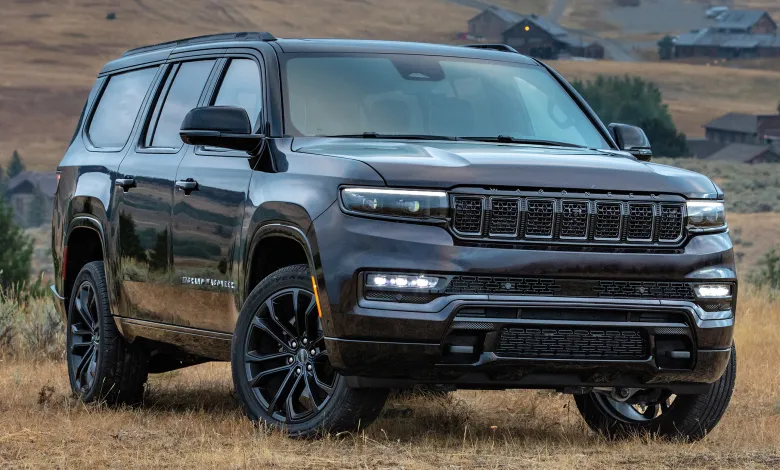Nada Guide: Expert Insights for Vehicle Valuation and Pricing
The NADA Guide has long been a valuable resource for both consumers and car dealerships when it comes to researching and comparing new and used vehicle values. Developed by the National Automobile Dealers Association (NADA), the guide provides a comprehensive database of car values, ratings, specifications, and photos, making it easier for all parties to make informed decisions about a vehicle's worth.

The NADA Guide not only covers new and used cars but also includes information on motorcycles, boats, and recreational vehicles, making it a one-stop resource for vehicle valuation.
Understanding car values is essential for both parties involved in a transaction. For car buyers, the NADA Guide offers insights into trade-in values, as well as retail and certified pre-owned (CPO) values. Dealerships use the NADA Guide to determine pricing strategies and accurately assess incoming trade-ins. This guide helps streamline the trade-in process and maintain consistency in the industry for the benefit of everyone involved.

Key Takeaways
- NADA Guide is a comprehensive resource for researching and comparing vehicle values
- It assists consumers and dealerships in understanding car values and streamlining the trade-in process
- The guide covers a wide range of vehicles, including cars, motorcycles, boats, and recreational vehicles
History of NADA Guide
Founding and Purpose
The NADA Guide has its roots in the National Automobile Dealers Association (NADA), a trade organization established in 1917. The NADA Guide was created in 1933 with the aim of providing a standard for used vehicle valuation and information. Its primary purpose was to assist dealers and consumers in determining fair market values for used cars, trucks, SUVs, and vans. This initiative led to the development of the "Official Used Car Guide," which has evolved into one of the most respected and reliable sources for used vehicle values in the automotive industry.

Evolution Over Time
Since its inception, the NADA Guide has experienced several changes as it adapted to the evolving needs of the automotive market. One significant development was the acquisition of NADA's Used Car Guide division by J.D. Power in 2015. This transition allowed the NADA Guide to exclusively focus on providing pricing and valuation information for both new and used vehicles.
Another important aspect of the NADA Guide's evolution is its approach to determining vehicle values. Initially, the guide heavily emphasized the wholesale price of vehicles, but over time, it adopted other criteria, such as mileage and overall condition, to offer a more accurate assessment of a vehicle's worth.
Today, the NADA Guide remains a widely used resource for both consumers and industry professionals, and it continues to adapt to the rapidly changing automotive marketplace. By staying committed to providing reliable, accurate, and up-to-date valuation information, the NADA Guide maintains its position as a leading source for used vehicle values in the industry.
Understanding Car Values
Factors Affecting Car Values
When determining car values, several factors come into play. Some of the key elements to consider are the car's make, model, year, mileage, condition, optional features, and geographical location. The NADA Guides consider these factors to provide a suggested retail value, trade-in value, and loan value for both new and used vehicles.
To aid in understanding car values, consider the following aspects:
- Make and Model: Certain car manufacturers and models hold their value better than others due to factors like reliability, popularity, and perceived quality.
- Year: Older vehicles typically have lower values as the likelihood of encountering mechanical issues increases with age.
- Mileage: More miles on the odometer may indicate higher wear and tear, resulting in a lower value.
- Condition: A well-maintained car in excellent physical and mechanical condition can command a higher price than one with visible damage or mechanical issues.
- Optional Features: Vehicles with additional features such as a sunroof, high-end audio system, or advanced safety components may have an increased value.
- Geographical Location: Supply and demand factors within a local market can influence car values.

Comparison with Kelley Blue Book
Both NADA Guides and Kelley Blue Book (KBB) are reputable sources for determining car values. While they consider similar factors when calculating values, their methodologies may differ, leading to potential discrepancies between their suggested values. As a result, car buyers and sellers may find it helpful to consult both sources to get a more complete understanding of a vehicle's potential value.
NADA vs. J.D. Power Ratings
While NADA Guides focus on determining car values, J.D. Power primarily assesses vehicles through their extensive ratings system. J.D. Power ratings can help identify factors such as reliability, performance, and customer satisfaction, which can influence a car's overall value. However, it's essential to note that J.D. Power ratings do not necessarily reflect the exact dollar value of a car. It is recommended to use NADA Guides or Kelley Blue Book as a primary source for determining car values, and consider J.D. Power ratings for additional insights into a vehicle's quality and performance.
Trade-In Process
Determining Trade-In Values
In the vehicle trade-in process, one of the crucial steps is determining the trade-in value of your car. To obtain a fair and accurate valuation, many people turn to the NADA Official Used Car Guide. This guide offers reliable information on the value of various vehicle models and helps the public with trade-in values.
NADA Guide provides trade-in values based on factors such as the vehicle's age, condition, mileage, and features. It's essential to have a clear understanding of these factors, as well as the local market demand, to avoid feeling shortchanged during negotiations. To ensure fairness and accuracy, dealerships also utilize the NADA Guide in their business operations.

How to Use NADA for Trade-Ins
When using the NADA Guide for vehicle trade-ins, follow these steps:
- Visit the NADA website: This is the official platform to access the NADA Official Used Car Guide, providing you with all the necessary information and tools for valuating your vehicle.
- Select your vehicle: Choose the make, model, and year of the car to be traded in. Input any additional features, such as upgraded sound systems or leather interiors, that could affect the value.
- Enter vehicle condition and mileage: Be as accurate as possible to obtain a realistic trade-in value. The NADA Guide separates vehicles into various condition categories, such as "excellent," "good," "fair," or "poor."
- Review the trade-in value: After providing the necessary information, the NADA Guide will generate a trade-in value estimate for the vehicle. This value can be a helpful reference point during trade-in negotiations.
Using NADA Guide
Accessing Pricing Information
With NADA Guide, users can easily access pricing information for a wide variety of vehicles. To obtain an accurate value estimate, one must provide basic information such as the vehicle's make, model, and year, as well as its VIN, if available. Vehicle values available on the platform include trade-in, private party, and dealership retail values. These pricing categories help users understand what they can expect when buying or selling vehicles in different scenarios.
Interpreting Vehicle Ratings and Specs
In addition to providing pricing information, NADA Guide also offers detailed vehicle ratings and specs. This data assists users in comparing various vehicles based on their features, performance, and overall quality. To access this useful information, simply search for your desired vehicle and click on the "Ratings and Specs" section.
Here's a brief overview of the types of information you'll find:
- Performance: Includes data about the vehicle's engine, transmission, and fuel efficiency.
- Reliability: Offers information about the vehicle's overall durability and dependability.
- Safety: Provides safety ratings, highlighting features like airbags, anti-lock brakes, and stability control systems.
Frequently Asked Questions
How can I determine the trade-in value of my vehicle using NADA?
To determine the trade-in value of your vehicle using NADA, you can visit their website, navigate to the type of vehicle you are looking to appraise, select the year, make, and model, and then input any additional features and mileage. This information will allow you to view an estimated trade-in value based on the factors NADA factors in.
What are the steps to finding the value of a used car through NADA?
Finding the value of a used car through NADA involves the following steps:
- Visit the NADA website.
- Select the appropriate dropdown option for cars.
- Choose the year, make, and model of the vehicle.
- Specify the condition of the vehicle.
- Include any optional features or accessories.
- Provide the vehicle's current mileage.
- Submit the information to receive estimated vehicle value.

How do NADA values for boats differ from other recreational vehicles?
NADA values for boats differ from other recreational vehicles by considering factors that are specifically applicable to boats. These factors include the type, length, and the power of the engine. Boat valuation also takes into account factors like improvements, added features, or modifications, and local market conditions.
In contrast, other recreational vehicles, like RVs or motorcycles, may have different factors influencing their value. These factors include depreciation, mileage, and optional accessories.
In what ways can I use a VIN to look up a vehicle's NADA value?
Using the VIN (Vehicle Identification Number) to look up a vehicle's NADA value can provide you with a more accurate and specific estimate of its worth. By entering the VIN into NADA's website, you can obtain information about the vehicle's make, model, year, and any optional features. This information then allows for a tailored estimation of its value.
How does the NADA guide estimate the value of motorcycles?
NADA estimates the value of motorcycles by considering factors such as the condition, location, mileage, and any accessories or added features. This information is combined with data from across the country, including sales transactions and dealer prices, to provide an accurate and comprehensive estimation of a motorcycle's value.
How have the valuation services of NADA evolved over time?
Over time, NADA's valuation services have evolved to incorporate a wider range of data. This includes pricing information from various sources and across different types of vehicles, such as motorcycles, boats, and RVs.
Furthermore, NADA's online presence has made it more accessible and user-friendly. This allows individual consumers to easily find and utilize valuation information for their own purposes.
Charlie is Editor-in-Chief of Sea Magazine







